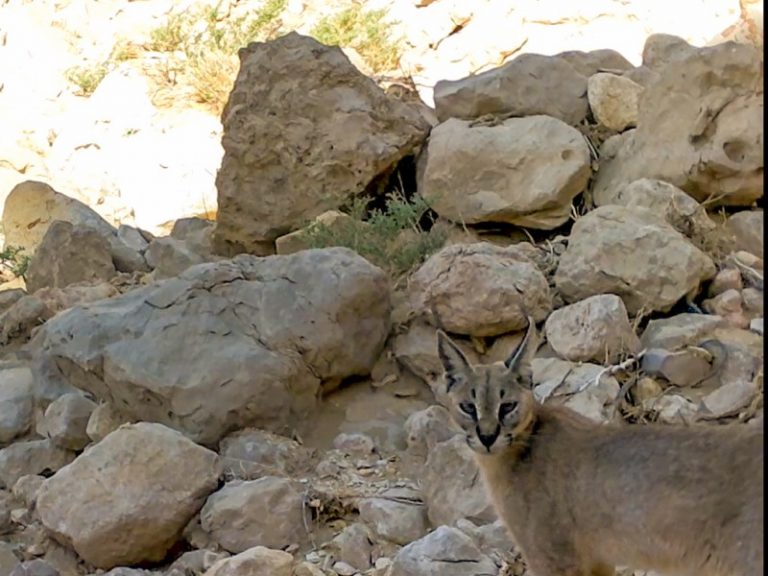Grabbing the headlines this week is a cat. However, this one is no ordinary feline as what the Environment Agency – Abu Dhabi or EAD has said.
The cat we’re talking about is the Arabian Caracal or Caracal schmitzi – a medium-sized, sand-coloured cat with distinct elongated, tufted black ears.
This adorable wild cat was spotted on Jabel Hafeet National Park in Al Ain this month thanks to camera installed by EAD in the area as part of its monitoring programme for conservation and research.
Here’s where it gets more interesting: the last known sightings of the Arabian Caracal in Abu Dhabi was 1984, making this latest appearance a welcome surprise.
In fact, sightings are so rare that conservation experts at least here are on the verge of declaring it extinct in local habitat.
So to celebrate its re-emergence, we searched for more information for us to get to know better this elusive feline…
- The caracal is native to Central Asia, Africa, the Middle East and India.
- Notoriously nocturnal, this cat had been described as highly secretive, difficult to observe, territorial and prefers to live alone or in pairs.
- A carnivore with impeccable hunting skills, this cat can leap higher than 12 feet to catch birds even in mid-air. As for its diet, it devours small mammals, birds and rodents.
- Its scientific name felis caracal was bestowed Johann Christian Daniel von Schreber in 1776.
- It is closely related to the African golden cat and is believed to have evolved 8.5 million years ago.
- A study done in South Africa shows that caracals are most active when air temperatures drop below 20 °C.
- Despite concerns about its dwindling population due to illegal hunting and habitat destruction, the caracal is categorised as least concern, meaning that it’s not considered threatened, near threatened or conservation dependent.
- Chinese emperors in the 13th and 14th centuries were fond of giving caracals as gifts, purchasing the cat from Muslim traders in exchange for gold, cash and silk.














0 Comments